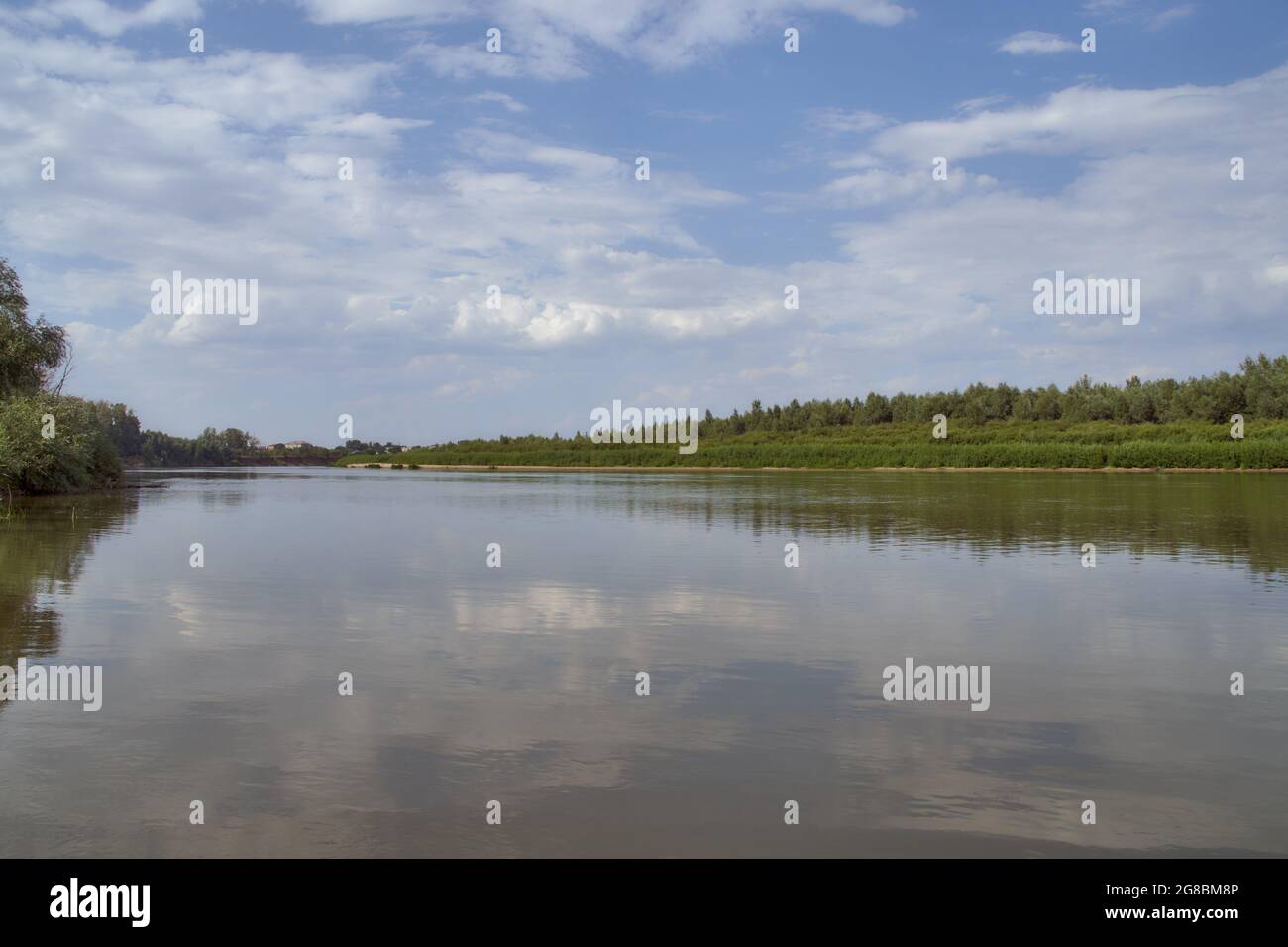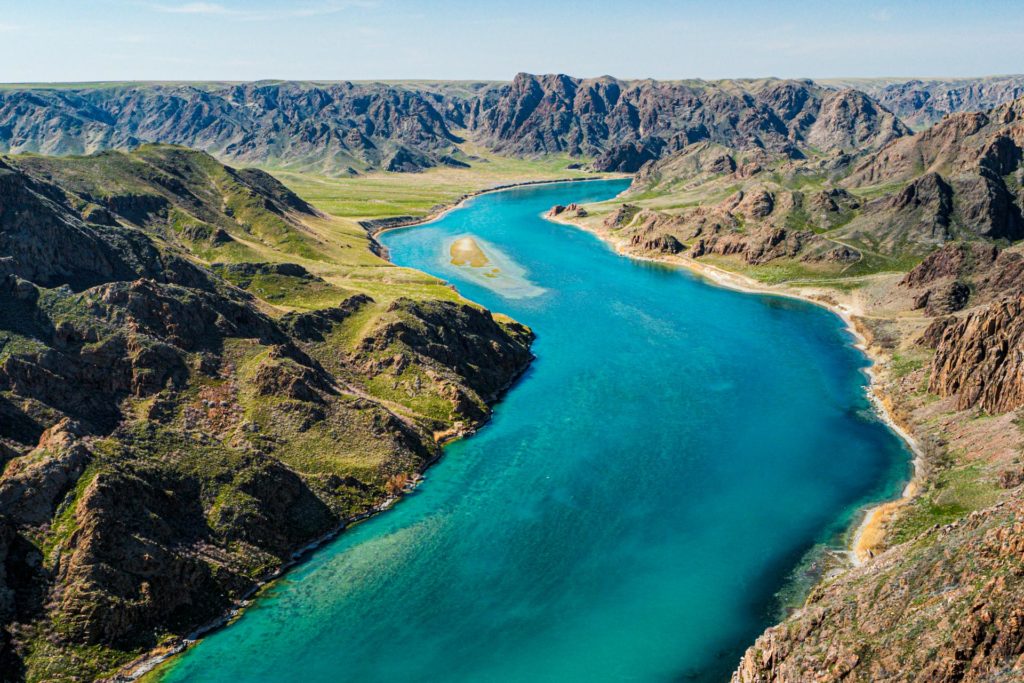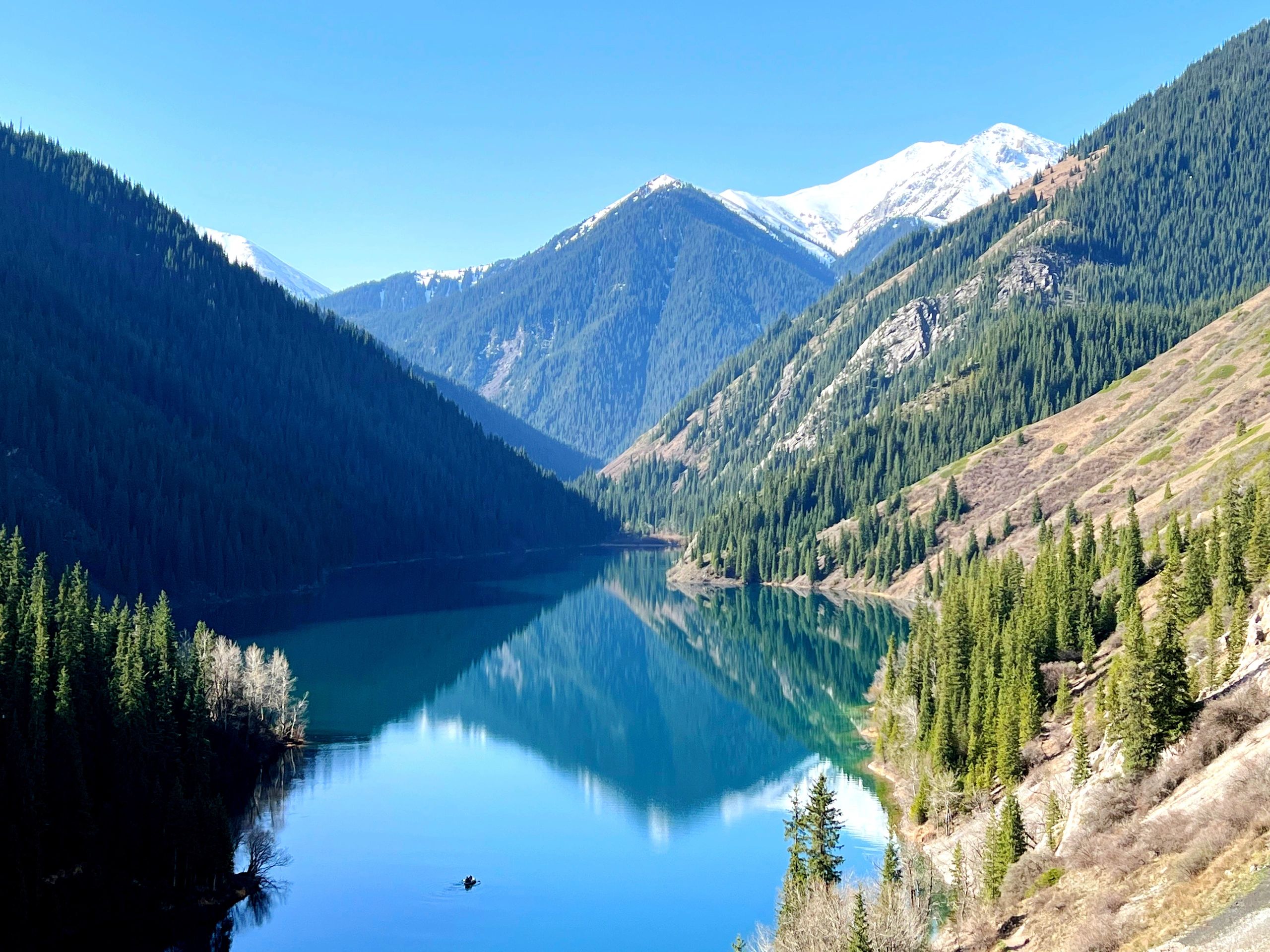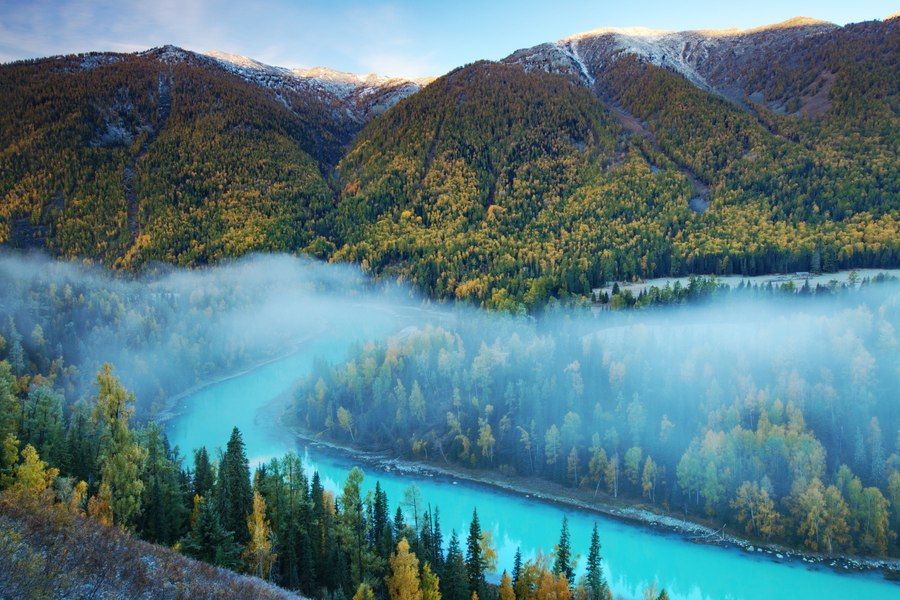Kazakhstan, a vast country in Central Asia, is home to some of the most significant rivers in the region. These rivers play a crucial role in shaping the country’s geography, supporting its ecosystems, and influencing human activities. From the Turgai River to the Irtysh River, each waterway has its unique characteristics and importance.
The Turgai River
The Turgai River is one of the longest rivers that flow entirely within Kazakhstan. It runs through the Turgai Valley, which is known for its rich mineral deposits, including iron ore. The river has an average flow rate of about nine cubic meters per second and drains into an endorheic basin. With a length of 513 miles, the Turgai River is a vital part of the region’s hydrological system.
The Irtysh River
The Irtysh River is the longest river that partially flows through Kazakhstan. It is a major tributary of the Ob River and passes through Russia, China, and Kazakhstan. The river is known for its historical significance and has been a source of conflict over the years. In Kazakhstan, the Irtysh River hosts three large hydroelectric plants, including the Shulbinsk, Bakhtarma, and Ust-Kamenogorsk. The river is 2,640 miles long and has played a significant role in the development of the region.
The Ishim River
The Ishim River is another important river in Kazakhstan. It is a tributary of the Irtysh River and flows through both Kazakhstan and Russia. The river is slightly navigable and freezes during late November to March. A dam was constructed in central Astana to manage water levels and floods. Kazakhstan plans to deepen the Ishim River to allow for small boats to pass through. The river is 1,522 miles long and is essential for irrigation and other water-related activities.

The Ural River
The Ural River originates from the south of the Ural Mountains and flows into the Caspian Sea. It serves as a natural border between Europe and Asia and is the third-longest river in Europe. The Ural River is home to several endangered species and migrating birds. It also supports various industries, including fishing and hydroelectric power. The river is 1,509 miles long and has been a significant trade route throughout history.
Other Rivers in Kazakhstan
Kazakhstan is home to numerous other rivers that contribute to the country’s ecosystem and economy. These rivers provide water for fishing, hydroelectric power plants, mining industries, irrigation, and recreational purposes. They also serve as habitats for various marine and terrestrial animal species. The rivers of Kazakhstan are not only important to the environment but also to the culture and traditions of the people living in the region.
The Terekty River
The Terekty River, also known as the Kusak, flows from China to Kazakhstan. It is a small river that is mainly known for the Sino-Soviet border conflict that occurred in August 1969. The river is located in the southern part of Xinjiang’s Yumin County and is characterized by its sparsely populated mountainous terrain. The river is usually dry, with little water reaching Lake Zhalanashkol.
Alakol Lake
Alakol Lake is a natural attraction in Kazakhstan, located near the Chinese border. Visitors need permission from the local police in Usharal to enter the area. The lake is surrounded by mountains and offers opportunities for hiking and nature exploration. It is a protected area, and visitors should check with the local authorities before planning their visit.

Lake Balkhash
Lake Balkhash is one of the largest lakes in Kazakhstan and is known for its beautiful scenery. There is a legend associated with the lake, involving a rich man named Balkhash and his daughter Ili. The lake is a popular destination for tourists and offers various recreational activities.
Big Almaty Lake
Big Almaty Lake is a unique mountain lake located near Almaty. It is one of a kind and is known for its stunning natural beauty. The lake is a popular destination for hiking and outdoor activities, offering breathtaking views of the surrounding mountains.
Caspian Sea
The Caspian Sea is the largest closed reservoir in the world and washes the western part of Kazakhstan. It has a rich history and has been known by various names throughout the centuries. The sea is home to diverse marine life and plays a significant role in the region’s economy and culture.
Charyn River Canyon
Charyn River Canyon is a breathtaking natural wonder in Kazakhstan. The canyon is known for its unique rock formations and scenic beauty. It is a popular destination for hikers and adventure seekers, offering a range of activities and experiences.

Ili River
The Ili River is a vital artery for tourism in Semirechye. It is formed by the confluence of the Kunges and Tekes Rivers and flows through an important valley in Kazakhstan. The river is known for its sparkling waters and is a key resource for the region.
Irtysh River
The Irtysh River flows into Zaisan Lake in the east after coming from China. It is known for its exotic desert landscapes and is home to various wildlife species. The river’s banks are steep on the right and gently sloping on the left, offering a diverse ecosystem.
Kaindy Lake
Kaindy Lake is a unique natural attraction located in the Kungei Alatau. It is known for its beautiful forested surroundings and is a popular destination for tourists. The lake was created as a result of a limestone landslide and offers a serene environment for relaxation and exploration.
Kapshagai Reservoir
Kapshagai is a satellite city of Almaty, associated with the construction of the Kapshagai Hydroelectric Power Station on the Ili River. The reservoir is an important source of energy and plays a significant role in the region’s development.

Kolsay Lakes
The Kolsay Lakes are a group of picturesque mountain lakes located in the Northern Tien Shan. They are known for their stunning natural beauty and are popular destinations for hiking, camping, and mountain biking. The lakes are surrounded by steep pine-clad slopes and offer a range of recreational activities.
Maloulbinskoye Reservoir
Maloulbinskoye Reservoir is a historical and natural monument located 20 km south of Ridder. It is part of the oldest hydroelectric complex in Kazakhstan, founded in 1938. The reservoir is an engineering and technical historical monument, offering a glimpse into the region’s past.
Shalkar Lake
Shalkar Lake is a historical and natural monument located in the Ural area. It is a popular destination for tourists and offers unique ecological, scientific, cultural, recreational, and aesthetic value. The lake is a serene environment for relaxation and rejuvenation.
Sibinskie Lakes
Sibinskie Lakes are a group of five clean and transparent lakes located 85 km from Ust-Kamenogorsk. The lakes are surrounded by granite mountains and offer a picturesque landscape for travelers. The area is known for its natural beauty and is a popular destination for hiking and outdoor activities.
In conclusion, the rivers of Kazakhstan are not only essential for the country’s ecosystem but also play a significant role in its culture, economy, and history. From the Turgai River to the Irtysh River, each waterway contributes to the unique character of Kazakhstan and offers a range of opportunities for exploration and recreation. Whether you’re interested in nature, history, or adventure, the rivers of Kazakhstan provide a fascinating glimpse into the country’s rich heritage and diverse landscapes.











More Stories